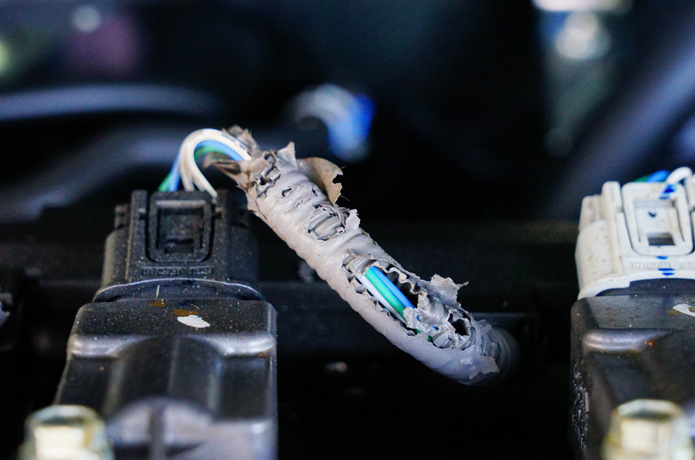Magazine
There’s a rat in my car!
- Increasing numbers of animal intrusions
- What’s the reason?
- What to do
Owning and driving a car comes with lots of responsibilities and ensuring it is road worthy and well maintained are major parts of those obligations. However, sometimes problems arise from the strangest of places and as UK breakdown organisation the RAC has reported, damage to vehicles caused by rats and foxes is one of them!
Increasing numbers of animal intrusions
During 2023, the RAC recorded the greatest numbers of mice, rats and foxes ‘surprising’ motorists and causing serious damage to their vehicles, after reviewing thousands of its UK patrol breakdown reports dating back to 2016.
Breakdowns caused by rodents had risen by 55% from 196 incidents in the first 11 months of 2018 to 303 over the same period in 2023, according to the motoring organisation. The problem worsens significantly as the seasons change, averaging a 66% increase from summer to autumn, over the last five years.
The 2023 RAC patrol reports showed rats had the biggest appetite for car parts and caused 51% of all the animal damage incidents by gnawing fuel hoses, infesting engine bays and damaging headlights. They also reported numerous cases of foxes chewing speed sensor wiring, windscreen wiper blades and brake hoses underneath cars.
What’s the reason?
Food left inside or in the vicinity of an unattended vehicle is the most common cause for attracting these unwanted visitors. Open bags of pet food stored in garages, for example, can lure mice and rats into a vehicle where they’re drawn to other temptations such as peanut and soy-based oils and waxes used on parts, including diesel injector wires, gearbox insulation and primer bulbs!
If left standing and unattended for long periods, vehicles can even become home to rodents and even lost pets, as they seek a bit of warmth and security.
RAC patrolperson Nick Isaac, who works around the Southwest of England, once found a squirrel using an air filter as its diner! Nick said: “The car had lost power and had an odd smell. When I lifted the bonnet and revved the engine the air filter moved like it was being sucked towards the engine. It turned out a squirrel had been taking nuts from a bird feeder and storing them in the air box, restricting air flow to the car.”
Another attended a Porsche where 10 mice had made a nest under the scuttle panel at the bottom of the windscreen, while another was called to retrieve a more exotic creature: a baby pet python that had taken up residence behind a wheel trim after going missing and being drawn to the car’s warm brakes.
RAC Breakdown spokesperson Alice Simpson said: “Many of us are used to seeing the occasional rat or mouse on the street, but finding one in your car is not only a nasty shock but often the cause of very unwelcome and expensive damage. Unfortunately, incidents like this are more common than drivers might expect, particularly over the winter months when animals look to take shelter from the cold conditions.”
What to do
“To reduce the risk of animal damage,” Alice continued, “check your car if it hasn’t been driven for a week or more. The best advice is to make sure no food – for pets or humans – is left inside. Also check for unusual smells and be mindful of any dashboard warning lights that don’t disappear after a minute or two. Any foodstuff in garages should be kept in airtight containers or locked in metal bins.”
Irrespective of what country you live in, if you suspect your car has sustained animal damage, whether that’s chewed cables or clogged air filters, you should contact a reputable workshop, that will gladly check it and undertake any necessary repairs!

